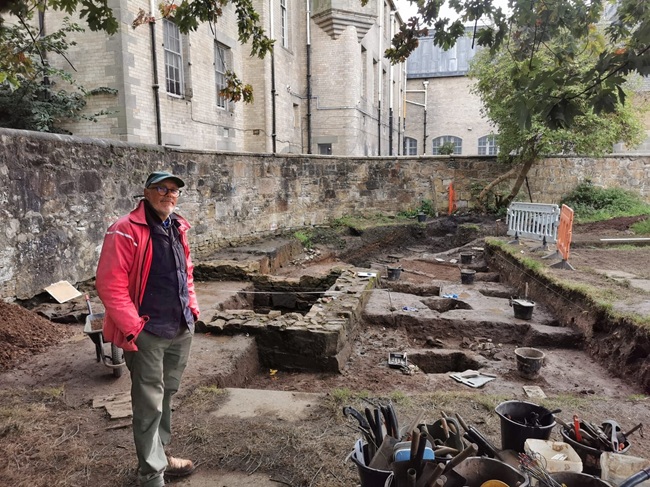Glasgow 850: Leading UofG archaeologist Stephen Driscoll brings the city’s story to life
Published: 19 November 2025
This week, the Dalrymple Lectures will draw on that lifetime of work as Professor Stephen Driscoll of the University of Glasgow brings the city’s archaeology to life, showing how discoveries from Govan to the Cathedral reveal Glasgow’s origins and its wider global significance.

Glasgow has turned 850 this year and its story is being told not through dry dates or dusty chronicles but through the stones, streets and hidden places that one of Scotland’s leading archaeologists has spent his career uncovering.
This November, the Dalrymple Lectures will draw on that lifetime of work as Professor Stephen Driscoll of the University of Glasgow brings the city’s archaeology to life, showing how discoveries from Govan to the Cathedral reveal Glasgow’s origins and its wider global significance.
Professor Driscoll is a leading archaeologist of Scotland’s historic period and has excavated nationally significant sites dating from Roman times to the present.
For his lectures, Professor Driscoll will draw on his more than three decades experience digging into the fabric of the city, from the Viking‑age sculpture of the form Govan Old Church to the medieval crypt of Glasgow Cathedral.
His work and research into Glasgow’s past has shown how archaeology can illuminate the foundations of urban life, the entanglements of empire and industry and the ways the city has continually reinvented itself over its eight and a half centuries.
Entitled Stones, Saints, Ships and Slaves: an archaeology of Glasgow for 850, over the course of two lectures, Professor Driscoll will explore how material evidence tells the story of Glasgow’s first 850 years and what came before.
- Thursday 20 November – Medieval Conceptions AD 500 to 1600: Excavations in Govan and the medieval burgh reveal how kings, Vikings and bishops shaped Glasgow’s early identity.
- Friday 21 November – Modern Movements AD 1600 to present: From Reformation changes at the Cathedral to Glasgow’s imperial and industrial legacies, archaeology uncovers the city’s role in empire, class and activism.
Professor Driscoll said: “Archaeology allows us to tell Glasgow’s story in ways that written records alone cannot. From the Viking carved stones of Govan to the hidden well of the Cathedral, the material evidence reveals the city’s origins, its entanglements with empire and industry as well as the changing forms of urban life.
“These lectures are about charting that journey and showing how archaeology continues to reshape our understanding of Glasgow.”
Dr Kenny Brophy, a Senior Lecturer in Archaeology and organiser of this year’s Dalymple series, said: “The Dalrymple Lecture series has been given annually in Glasgow since 1907 jointly hosted by the University of Glasgow and the Glasgow Archaeological Society. It was established to support free public lectures each year on a European archaeology topic and some of the leading archaeologists of the last century have given the Dalrymples. It is exciting and appropriate that in the year of Glasgow 850 we celebrate the contribution of archaeology to our understanding of the history of this great city and there is no one better to tell this story than Professor Driscoll.”
The Dalrymple Lectures were founded in 1908 by James Dalrymple Gray of Dalrymple whose bequest ensured their continuation. Over more than a century they have been delivered by many of the most distinguished figures in archaeology and remain one of the longest running free public lecture series in Europe.
Dalymple Lectures
Dates: Thursday 20 November and Friday 21 November 2025
Venue: Sir Charles Wilson Lecture Theatre, University of Glasgow, 3 Kelvin Way, Glasgow G12 8NN
Time: 6.30pm (Lecture will be 50 minutes long and there will be time at the end of Q&As with Professor Driscoll)
Free entry, livestreamed and recorded. Full details of how to attend or join the livestream can be found here – Dalymple Lecture Series
First published: 19 November 2025

